The brightest planets in June's night sky: How to see them (and when)
Where are the bright naked-eye planets in June 2025 and when are the best times to view them?
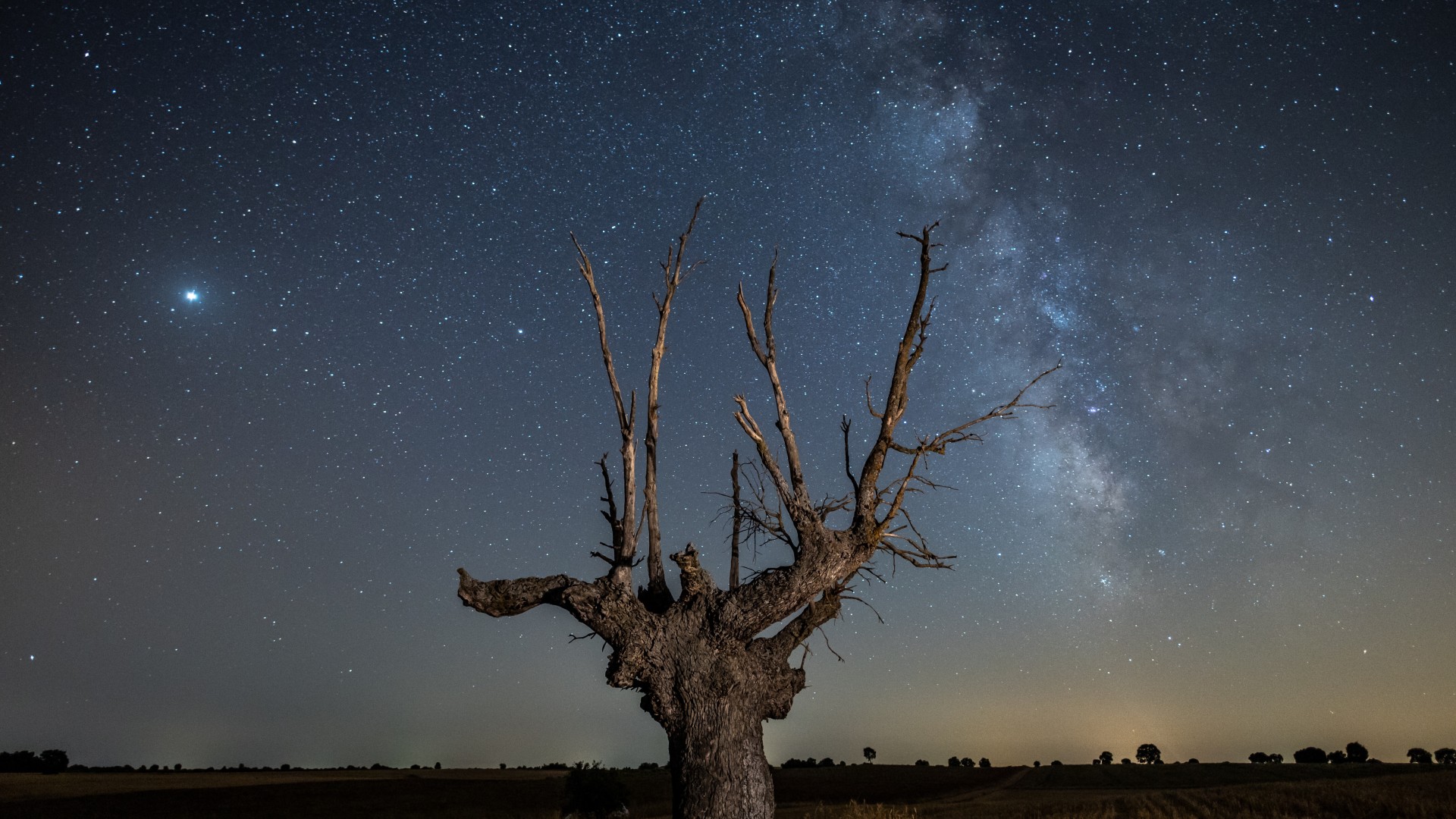
As far as evening skywatchers are concerned, Mercury, the innermost planet to the sun, has a fair-to-middling apparition, becoming evident very low in the northwest sky about an hour after sunset and will be just to the east (left) of the two stars marking the heads of Gemini the Twins during the final week of the month. A crescent moon will join the show on June 26.
The other evening planet is orange-yellow Mars, which continues to fade as it pulls away from Earth, yet makes for an interesting spectacle for much of the month as it interacts with the bluish-white first magnitude star, Regulus in Leo, with both objects appearing closest together on June 17; both will make for an eye-catching sight due to their color contrast and because they'll be quite similar in brightness.
In the morning sky, Saturn becomes available for viewing in the after-midnight hours. The recent edge-on appearance of the rings has recently improved somewhat, though their inclination toward Earth is still quite small. A far brighter target is Venus, which will be readily apparent a couple of hours before sunrise and will spend the coming weeks slowly mounting the eastern sky. The only planet out of the viewing loop will be Jupiter, which will transition from the evening to the morning sky during the final week of this month and will remain too close to the sun to be seen.
Related: Night sky, June 2025: What you can see tonight [maps]
Read more: Best telescopes for seeing planets in 2025
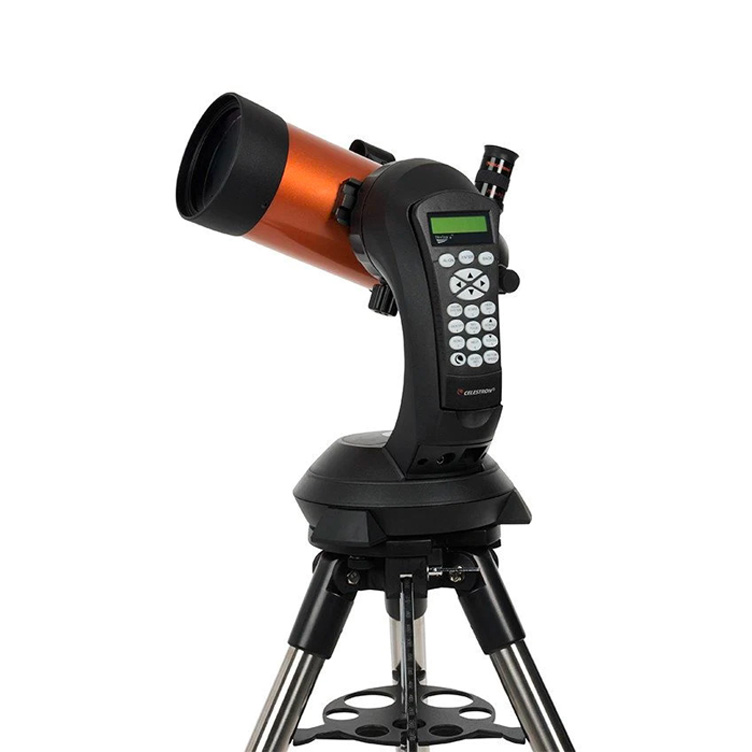
Want to see planets up close in the night sky? The Celestron NexStar 4SE is ideal for beginners wanting quality, reliable and quick views of celestial objects. For a more in-depth look at our Celestron NexStar 4SE review.
In our schedule, remember that when measuring the angular separation between two celestial objects, your clenched fist held at arm's length measures roughly 10-degrees. Here, we present a schedule below which provides some of the best planet viewing times as well directing you as to where to look to see them.
Be sure to check out our best telescopes for viewing planets guide and our more general guides for the best binoculars and the best telescopes. If you're interested in taking your own impressive skywatching images, we have recommendations for the best cameras for astrophotography and the best lenses for astrophotography, as well as a guide on how to photograph the planets.
The sun
The sun reaches its northernmost point in the heavens at 10:42 p.m. Eastern Daylight Time. This solstice marks the beginning of summer in the Northern Hemisphere and winter in the Southern.
Mercury
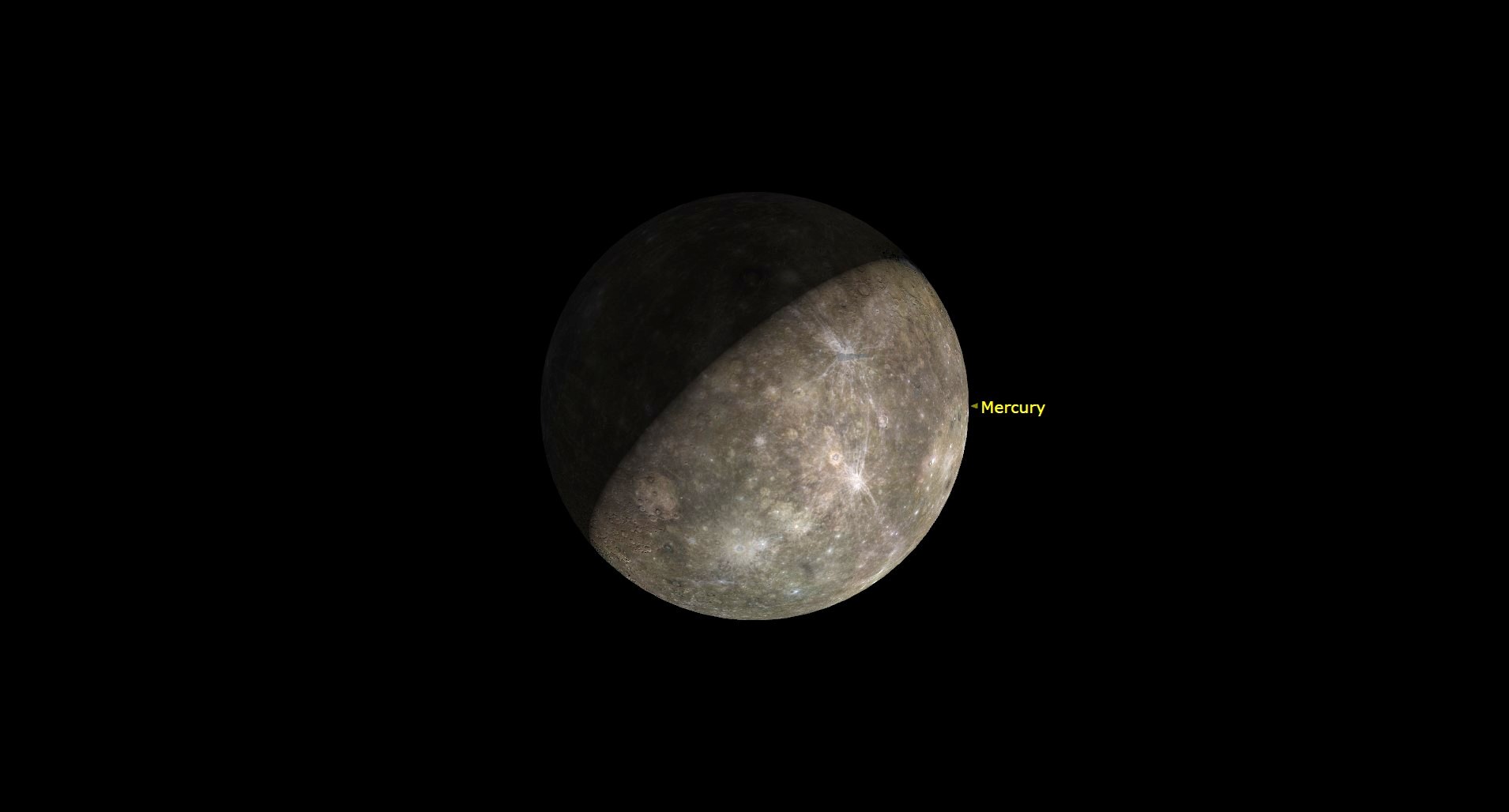
Mercury is currently in the midst of one of its excellent late spring/early summer apparitions in the evening sky. It comes into view during the second week of June but very low in the northwestern twilight sky. You probably won't be able to find it until well after sunset. That's no problem because during the entire second half of June this normally fugitive world doesn't set until 90 minutes or more after the sun. About an hour after sunset on June 21, look low toward the west-northwest horizon for zero-magnitude Mercury.
Venus
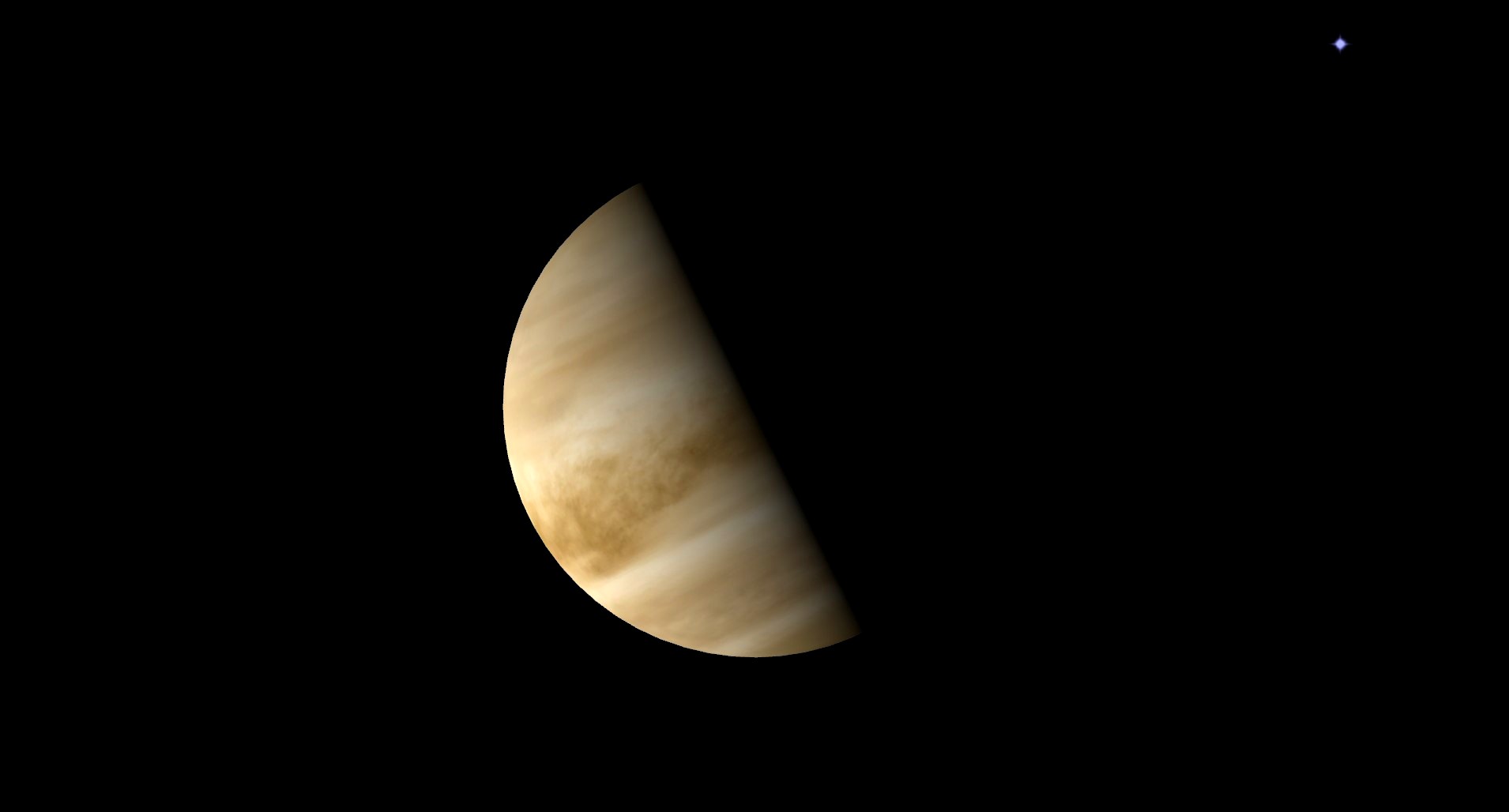
Venus rises only about 2.5 hours before the sun this month and attains greatest western elongation today (46 degrees west of the sun), but remarkably, it won't be highest at dawn for observers at mid-northern latitudes until early August. It's about 10 degrees above the eastern horizon an hour before sunrise at the beginning of June, increasing to 20 degrees by month's end. By geometry it should now appear to be half-lit, but it may not look that way in a telescope until several dawns later. This effect was first noticed by the German amateur Johann Schröter. On which day, a few days after greatest elongation, does the phase of Venus look exactly half in your telescope? Watch Venus slowly shrink from an almost half phase on June 1 to a 25 percent smaller gibbous disk on June 30.
Mars
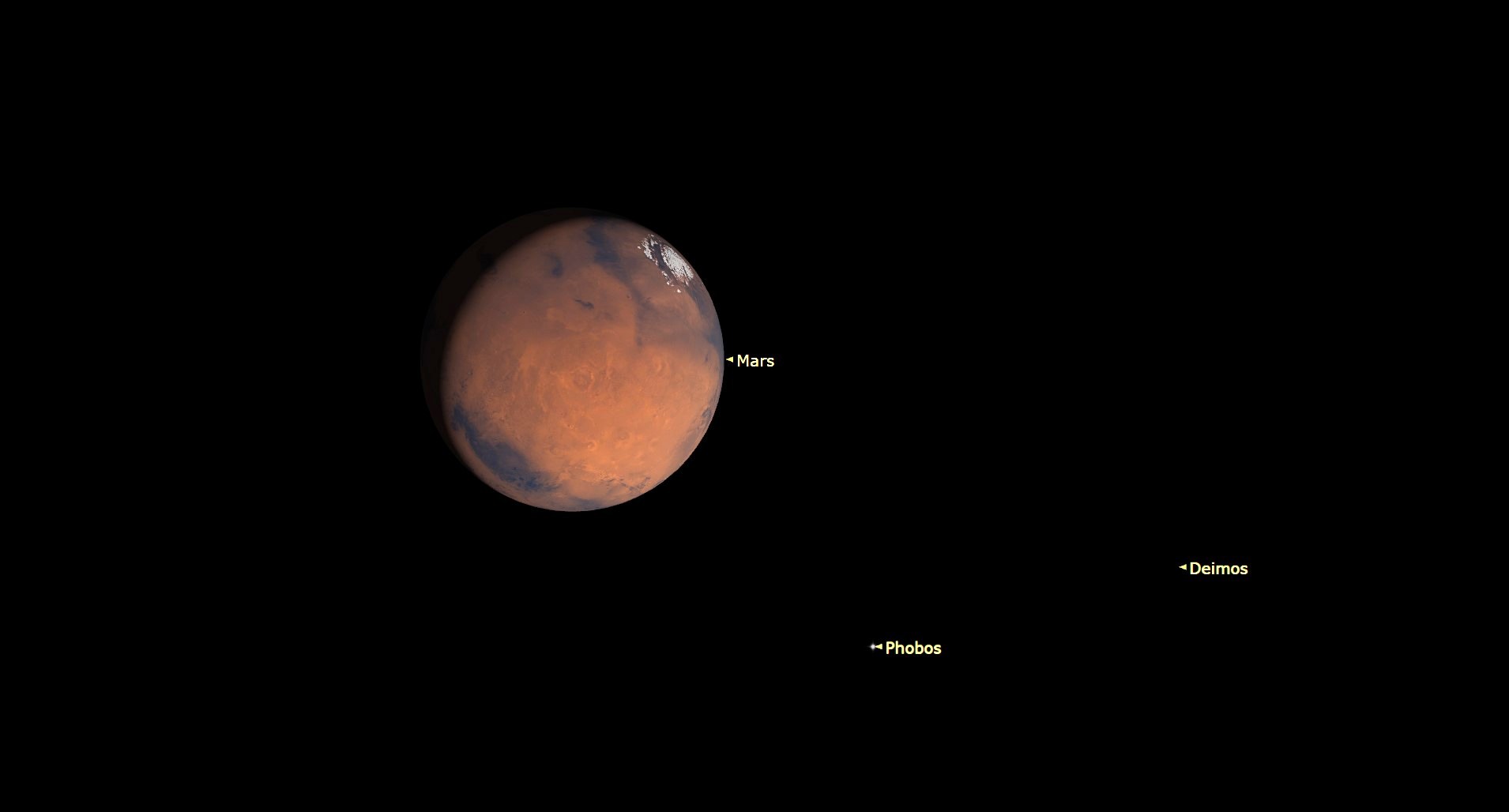
Mars draws attention to itself in the west after dusk by forming a striking "double star" with Regulus this evening. The planet is just a trifle dimmer than the star but their proximity intensifies the orange-yellow of Mars and the blue-white of Regulus. Mars shines 8 degrees to the lower right of Regulus as June opens but stays within 5 degrees of it from June 8 to June 25. Conjunction and appulse (least separation) take place on June 17, with Mars scraping 0.75 degree north of Regulus. After that Mars moves roughly 0.5 degrees per day to the star's upper left.
On the evening of June 29, as night falls, take note of the wide waxing crescent moon hanging about one-quarter of the way up in the western sky and perched less than a half-degree above it will be Mars. In a small telescope the planet looks little more than a star itself; it appears hardly bigger than Uranus.
Jupiter

Jupiter is in conjunction with the sun on June 24 and transitions from an evening to morning object, though because of its proximity to the solar glare, you're not likely to spot it in the dawn twilight until the second week of July.
Saturn

Saturn looks like a sedate yellow-white "star" shining about 5 degrees to the right of the moon in the morning, now positioned below the faint Circlet of stars of Pisces the Fishes. It rises around 2:30 a.m. local daylight-saving time at the beginning of June and around 12:30 a.m. by the end of the month.
It is soon followed up by the much more southerly star Fomalhaut, which surprisingly is nearly a match for Saturn in brightness. The reason Saturn is a bit on the faint side (magnitude +1.1) can best be seen in a telescope when the planet is fairly high before dawn: The mighty rings are now barely tilted toward Earth at an inclination of only about 3.5 degrees and are supplying very little reflected light.
Joe Rao serves as an instructor and guest lecturer at New York's Hayden Planetarium. He writes about astronomy for Natural History magazine, Sky and Telescope and other publications.
Editor's Note: If you get a great photo of any of the planets and would like to share it with Space.com's readers, send your photo(s), comments, and your name and location to spacephotos@space.com.
Join our Space Forums to keep talking space on the latest missions, night sky and more! And if you have a news tip, correction or comment, let us know at: community@space.com.
Get the Space.com Newsletter
Breaking space news, the latest updates on rocket launches, skywatching events and more!

Joe Rao is Space.com's skywatching columnist, as well as a veteran meteorologist and eclipse chaser who also serves as an instructor and guest lecturer at New York's Hayden Planetarium. He writes about astronomy for Natural History magazine, Sky & Telescope and other publications. Joe is an 8-time Emmy-nominated meteorologist who served the Putnam Valley region of New York for over 21 years. You can find him on Twitter and YouTube tracking lunar and solar eclipses, meteor showers and more. To find out Joe's latest project, visit him on Twitter.
You must confirm your public display name before commenting
Please logout and then login again, you will then be prompted to enter your display name.
